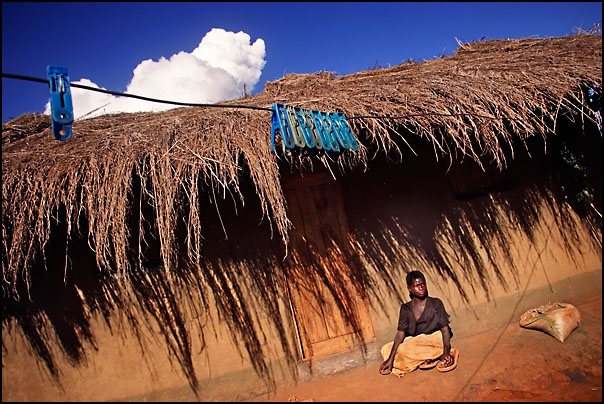As I wrote in the post Getting Across to the Other Side earlier this year, any creative endeavour—whether writing a book, making a painting, doing a photo project, building a blog—can be compared with climbing or walking across a canyon. You begin the project with a clear plan and great enthusiasm, but as you engage in the work your energy for the project begins to fade. However, if you stick with the project through the deepest part of the canyon and keep pushing up again on the other side, you will be greatly rewarded.
As I wrote in the post; the key is to remain focused on your vision and embrace the journey.
Unfortunately, many people experience the struggles at the bottom of the canyon and misinterpret them that they are in the wrong place. They believe that if they were on the right path, everything would fall into place easily.
The thing is; you will rarely be certain you are moving in the right direction, especially when you are headed into unchartered, creative territory. The creative pursuit is about not only recognizing the potential of risk but embracing it as an essential part of growth. If you don’t challenge yourself you will not develop creatively.
Moves that appear the least risky in the short term are often the most risky moves in the long term, because they keep you among the huddled masses of those who are doing expected, mediocre work. The unspoken truth is that very few people ever become comfortable with risk, but brilliant contributors recognize that without measured risk in your life you will not grow.
Over time, this daily uncertainty and the lack of guaranteed results can cause our passion to wane, squelch our ambition, or, worse, cause us to settle into a pattern of producing work that we know does not the reflect the true power of our authentic voice. The better we understand the hurdles that stand in our way, the better equipped we will be to tap into the practices that will aid us in countermanding them.
One of those hurdles is the fear of pursuing our authentic voice. Because that means to break out of the conformity of our culture or the society with which we identify. It’s tough to be seen as different or as an outlier, and that’s exactly what an authentic voice makes us become.
At its heart, the fear of not fitting in is a fear of rejection, often stemming from the concern that poor performance will mean alienation from the group, a degradation of self-worth or self-perception and possible loss of livelihood. Most of us have experienced this fear, whether asked to offer our opinion in a meeting, to deliver a proposal for a new direction for a project, or when simply considering whether or not to share some work we’ve been toiling away in private.
If you want to do unique, contributive work, and develop your voice, you must have the courage to offend. You must recognize that there will be people who just don’t get it, and muster the courage to keep moving forward anyway. You need to be willing to act on your intuitive hunches.
There are plenty of examples of artists and creatives who went against the tide of their time or authorities of their field—and ended up changing our perspective. F. Scott Fitzgerald’s The Great Gatsby, widely hailed as one of the greatest books of the twentieth century, was once rejected by a publishing executive who said, “You’d have a decent book if you’d get rid of that Gatsby character.” In 1962, Decca recording executive Dick Rowe reportedly told Brian Epstein, manager of The Beatles, “We don’t like their sound. Groups of guitars are on the way out”.
I have certainly had my share of rejections. It’s not enjoyable, not at all. Sometimes, I have been completely devastated by those rejections, wanting to give up. But as I have grown older, I have learned to accept that many, and even most, people might not be interested or like what I do with my photography. Now I don’t take it personally. What drives me to keep on photographing, is the joy of creating, photographing, being able to convey those emotions that made me want to take a photograph in the first place. I want to connect with an audience, but I don’t want to hold back in fear of their rejections. If only a handful appreciate a photo of mine, that will suffice.
I keep walking my path, in whichever direction it takes me.
Would you like to get motivating thoughts related to the act of photographing? Every once a month I write Sideways—nuggets of inspiration on photography. Sign up to receive Sideways in your email.






























